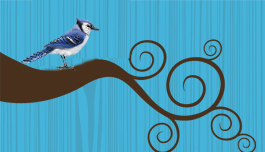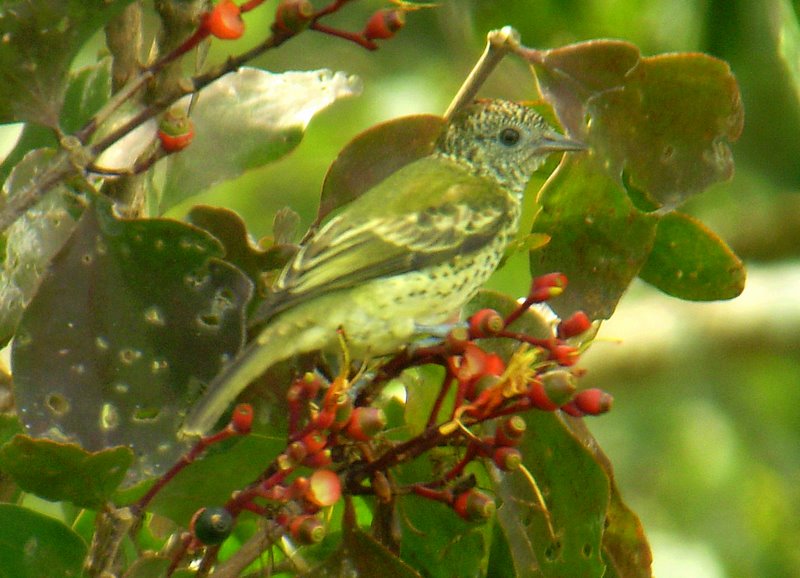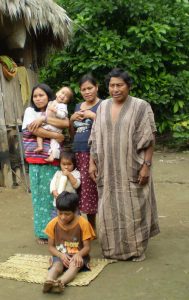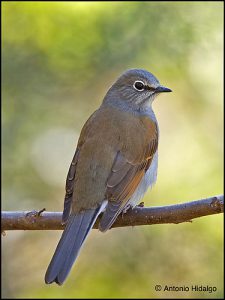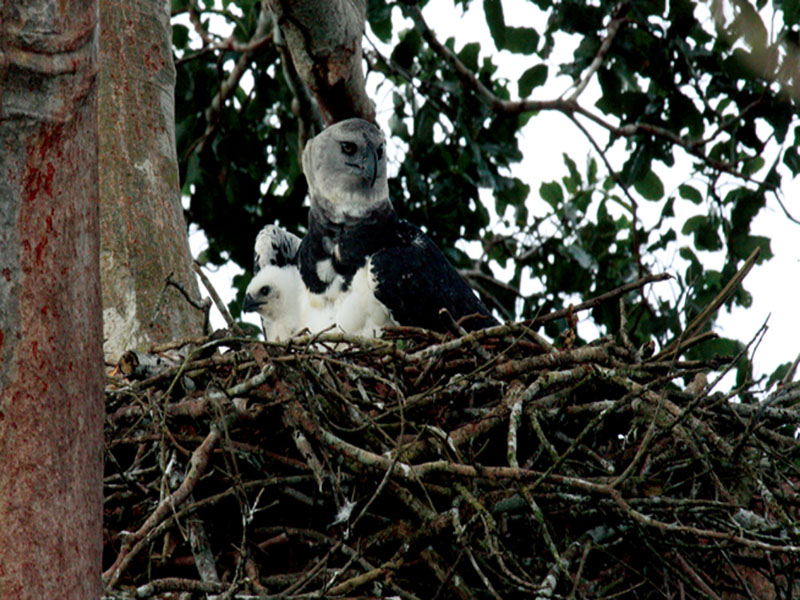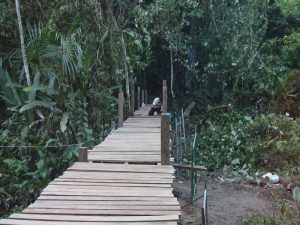NewsLetter – Kolibri Expeditions
 |
| Newsletter Nº 008 Date: October 9 – 2009 |
| Dear birdwatcher, |
|
This birding news bulletin from Peru is the 8th since its start in 2004. If you receive this newsletter we probably have birds and birdwatching in common, but you are right, it is unsolicited. You did not ask for it. On the other hand, this is an informative newslettter about birds and their conservation and links to articles which you hopefully find useful if you are a birder. There is no sales pitch in this newsletter and the links presented here are not directed to pages where you are asked to buy something from us. This newsletter is different compared to previous newsletters. It contains some posts from my blog A birding blog from Peru by Gunnar Engblom, that I think many of you will find useful. The blogposts can be commented, so you can give feedback directly. I answer all questions best I can. This newsletter covers bird conservation projects, social media for birders, some selected blogposts from the last year – both on broad topics as well as more specific birding in Peru and finally a few updates on the Kolibri staff who are re-producing and producing future birdguides.
Here is the table of content: 1. Facebook for birders 1. Facebook for birders.
For those already on Facebook and would like to become Facebook friends with me here is my Facebook profile. https://www.facebook.com/Gunnar.Engblom/ Also note that I have started three Facebook groups open for anyone to join.
These groups are NOT commercial vehicles for Kolibri Expeditions, but rather open for all that share the same interest. Finally, there is a Kolibri Expeditions Fan page. In a previous newsletter I introduced Kolibri Ambassadors – a community for our past and future clients. However, with the growth of Facebook, this initiative has become obsolete. I regret that I did not know about Facebook back then. This “Fan Page” shall be a great place to discuss Kolibri Expedition trips with others. I am planning to post a lot of photos and videos here for your enjoyment. 2. Blogging for birders
3. Twitter for birders. I am sure I am loosing some people now. Twitter seems to most birders like a complete waste of time. I could not have agreed more, when I first looked at this Social Media fad. I have changed my mind since. If you want to learn more how Twitter can be useful for birders check out Twitter for birders. The biggest value of Twitter for us, apart from the obvious link-sharing, is that we can recruit more new birders from the huge Twitter pool and pass on birding news very fast. I am sure I am loosing some people now. Twitter seems to most birders like a complete waste of time. I could not have agreed more, when I first looked at this Social Media fad. I have changed my mind since. If you want to learn more how Twitter can be useful for birders check out Twitter for birders. The biggest value of Twitter for us, apart from the obvious link-sharing, is that we can recruit more new birders from the huge Twitter pool and pass on birding news very fast.If you would like to connect with me on Twitter, here is my twitter handle @kolibrix. Click on the link and you shall see my latest tweets.I have covered Twitter quite a bit on my blog. You might find the following blogposts interesting.
4. Birds as tourism attractions
Here is my list of the top 11 bird tourism attractions for Peru. Make a list of your best tourism attractions for your area and upload it in a blog and I’ l write a follow-up post linking to you. 5. 1000 birds to see before you die.
6. How to become a birdwatcher in the 21st century.
I have two blogposts that develop the new way to recruit new birders.
7. How to avoid chiggers in the Tropics.
8. A Marathon for Satipo road.
9. Amarakaeri Communal reserve next to Manu.
However, this year two of the lodges never got restored to functionality after the rains. It is quite a shame, so I thought Kolibri Expeditions best make something about it. We are very excited to be committed to make sure that the lodges are re-opened again. Read about the strategy in this update to the community lodges next to Manu. The first support and promotion trip is scheduled on Oct 29, 2009 and hosted by the well known blogger GrrlScientist (Devorah Bennu). The trip she hosts would be particularly interesting for anyone that loves parrots. Devorah Bennu is a parrot expert. Read my interview with GrrlScientist here. Also check this blog post by Seabrooke Leckie who host the blogger promotion trip in Nov 2010. 10. Book review: Life List by Olivia Gentile.
11. Meet the crew. We are producing more birders.
————————————————– That is it folks. There is no commercial interest in this newsletter, but I admit that the link to Life List on Amazon.com would give me coffee money if anyone would buy it after clicking the link. Do sign up for the twice-monthly opt-in newsletter below if you got interested in our tours or just want to stay uptodate with my blog posts without having to check the actual blog to see what is new.
Good birding to you all
Gunnar
|
|
|


 With 300 million users, Facebook should not need a specific presentation to you. However, I have seen that many of my birding friends still have not jumped on the band wagon or have not realized the potential it has for birders to connect with each other as a community. It is the perfect place to search for advice when planning for a birding trip. And you don’t have to be real friends to be friends on Facebook. Having birdwatching in common is at least for me enough to connect with you through Facebook. Read the full article:
With 300 million users, Facebook should not need a specific presentation to you. However, I have seen that many of my birding friends still have not jumped on the band wagon or have not realized the potential it has for birders to connect with each other as a community. It is the perfect place to search for advice when planning for a birding trip. And you don’t have to be real friends to be friends on Facebook. Having birdwatching in common is at least for me enough to connect with you through Facebook. Read the full article:  To maintain an on-line web-log (blog) has become extremely popular in recent years. Digital photography and free resources such as Blogger (by Google) and My Space has made it easy for birders to also publish their own tales and photos of birds on their own site at no cost. In contrast to Facebook you may share with everyone on a blog, not only with your near friends. I too have had a few blogs that I have nourished all to rarely, until I recently understood that a regular blogging section on our company page could actually bring traffic to the main web-page, as well as improve ranking on search the engines. I down-loaded the WordPress blogging platform to my web-page. This platform is also free and popular among businesses because it can be uploaded on your own domain and it has various plugins that makes it easier for search engines to find your posts. You find more info about blogging and how to connect with other bird bloggers and get traffic to your blog in my
To maintain an on-line web-log (blog) has become extremely popular in recent years. Digital photography and free resources such as Blogger (by Google) and My Space has made it easy for birders to also publish their own tales and photos of birds on their own site at no cost. In contrast to Facebook you may share with everyone on a blog, not only with your near friends. I too have had a few blogs that I have nourished all to rarely, until I recently understood that a regular blogging section on our company page could actually bring traffic to the main web-page, as well as improve ranking on search the engines. I down-loaded the WordPress blogging platform to my web-page. This platform is also free and popular among businesses because it can be uploaded on your own domain and it has various plugins that makes it easier for search engines to find your posts. You find more info about blogging and how to connect with other bird bloggers and get traffic to your blog in my  This is an interesting exercise. Say you were to name the birds in your country or your state that are or could be tourism attractions for non-birders. These are the kind of birds that everyone likes with a lot of Wow-factor. The kind of attraction one would make a detour to see. They could be arena birds displaying in leks, big colonies, penguins, hummingbirds, places of concentrated migration or just very special birds.
This is an interesting exercise. Say you were to name the birds in your country or your state that are or could be tourism attractions for non-birders. These are the kind of birds that everyone likes with a lot of Wow-factor. The kind of attraction one would make a detour to see. They could be arena birds displaying in leks, big colonies, penguins, hummingbirds, places of concentrated migration or just very special birds. Do you feel that there is no way you can keep up with the world birding. There are just too many birds to see. Instead of trying to see them all, why not just concentrate on the top 1000 birds. The most magnificent and special birds that you would like to see during your lifetime. Not only does this make your targets more manageable, but it all also invites you to be less fanatic during your holidays with your non-birding spouse and just concentrate on those special birds that maybe he/she would also enjoy. This idea will summit with a book, and you can help decide which species to include. Click this link:
Do you feel that there is no way you can keep up with the world birding. There are just too many birds to see. Instead of trying to see them all, why not just concentrate on the top 1000 birds. The most magnificent and special birds that you would like to see during your lifetime. Not only does this make your targets more manageable, but it all also invites you to be less fanatic during your holidays with your non-birding spouse and just concentrate on those special birds that maybe he/she would also enjoy. This idea will summit with a book, and you can help decide which species to include. Click this link:  I predict that birding and nature watching will grow very fast in the coming years. Why? Because, the birders are very good at promoting and recruiting, by putting a pair binoculars and field guide in the hands of a teenager? Hardly! That is so 20th century!
I predict that birding and nature watching will grow very fast in the coming years. Why? Because, the birders are very good at promoting and recruiting, by putting a pair binoculars and field guide in the hands of a teenager? Hardly! That is so 20th century! Chiggers can be a nuisance and difficult to protect oneself from. Often one takes measures after the damage is already done. Here is a
Chiggers can be a nuisance and difficult to protect oneself from. Often one takes measures after the damage is already done. Here is a  I have the ambition but not always the time to train to become a half decent Marathon runner for my age. My dream is to be able to qualify for the oldest marathon in the world – the classic Boston Marathon. The problem is that there was no Marathon in Peru that was internationally recognized, so I had my mind to train for a Marathon in the US late in the year. But in April I still had not even gotten started to train and I hear that all of a sudden there would be a Marathon in Lima May 31 and the first one to be a qualifying race for Boston and only 5 and half weeks away. I should give it a try although time was short. I needed yet another stimulus and challenge and making my race a fund-raiser for the conservation of Satipo road and for eco-tourism infrastructure was a perfect match. Below follows a series of blogposts on the marathon and the Satipo road project. We are happy to been able to work on this together with Rainforest Partnership.
I have the ambition but not always the time to train to become a half decent Marathon runner for my age. My dream is to be able to qualify for the oldest marathon in the world – the classic Boston Marathon. The problem is that there was no Marathon in Peru that was internationally recognized, so I had my mind to train for a Marathon in the US late in the year. But in April I still had not even gotten started to train and I hear that all of a sudden there would be a Marathon in Lima May 31 and the first one to be a qualifying race for Boston and only 5 and half weeks away. I should give it a try although time was short. I needed yet another stimulus and challenge and making my race a fund-raiser for the conservation of Satipo road and for eco-tourism infrastructure was a perfect match. Below follows a series of blogposts on the marathon and the Satipo road project. We are happy to been able to work on this together with Rainforest Partnership. Last year I got the privilege to visit four new lodges on the Manu circuit owned by Wanamei – a tour company formed by the 8 communities of three native ethnic groups Yine, Matsiguenka and Harakmbut. I immediately saw a potential for a niche marketing these lodges for birders and we set up some programs.
Last year I got the privilege to visit four new lodges on the Manu circuit owned by Wanamei – a tour company formed by the 8 communities of three native ethnic groups Yine, Matsiguenka and Harakmbut. I immediately saw a potential for a niche marketing these lodges for birders and we set up some programs.  One of the nice things about writing a somewhat popular blog is that sometimes one gets a free book. The new biography
One of the nice things about writing a somewhat popular blog is that sometimes one gets a free book. The new biography  It is time to present to you our staff for the season 2009-2010. Here is
It is time to present to you our staff for the season 2009-2010. Here is 